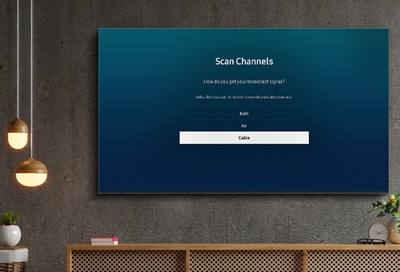Apollo Group Tv for Dummies
Apollo Group Tv for Dummies
Blog Article
Some Ideas on Apollo Group Tv You Should Know
Table of ContentsThe smart Trick of Apollo Group Tv That Nobody is DiscussingExcitement About Apollo Group TvThe Basic Principles Of Apollo Group Tv Apollo Group Tv Things To Know Before You Buy
In this scenario, instead than having three-minute business areas throughout a 30-minute tv program, television programming may change to one where a consumer will certainly be required to have a monthly subscription, to make sure that they cen sight targeted banner advertisements. This kind of advertising and marketing already occurs on the web, and the quantity of information television companies accumulate enables them to do similar.Define the significant trends amongst the broadcasting and cord networks. Popular radio shows such as police dramatization Dragnet and western cowboy collection Gunsmoke were adapted for television, and new Television programs were sponsored by solitary advertisers, simply as radio shows had actually been.
Today, the tv sector is even more complex. Programs are sponsored by several advertisers; programs is managed by significant media empires; and the three major networks no longer dominate the airwaves but instead share their customers with many cable networks. Numerous factors make up these patterns within the market, including technological advancements, government guidelines, and the development of brand-new networks.

Rumored Buzz on Apollo Group Tv
Also public tv has come to be subject to the influence of advertising and marketing. Established in 1969, (PBS) created out of a record by the Carnegie Payment on Educational Television, which analyzed the function of educational, noncommercial tv on culture. The report advised that the federal government money public tv in order to provide variety of programming throughout the network eraa service produced "not to sell items" yet to "improve citizenship and public service (McCauley, 2003)." Public tv was also planned to give universal accessibility to tv for viewers in backwoods or viewers who could not manage to spend for private tv solutions.
The duration in between 1950 and 1970 is traditionally recognized as the. Other than a little part of airtime controlled by public television, the 3 major networks (called the Big 3) dominated the television market, jointly accounting for greater than 95 percent of prime-time watching. In 1986, Rupert Murdoch, the head of international company Information Corp, launched the Fox network, challenging the prominence of the Big 3.
Targeting young and minority target markets with programs such as Buffy the Vampire Slayer, Moesha, Dawson's Creek, and The Wayans Bros., the new networks wished to draw stations away from their old network affiliations. Instead than duplicating the success of Fox, UPN and WB had a hard time to make an influence. Not able to bring in lots of associate terminals, both fledgling networks reached fewer households than their larger competitors due to the fact that they were inaccessible in some smaller cities.
This choice paved the way for the growth of cable television motion picture networks, adding to the rapid development of cable in the 1980s and 1990s. apollo group tv app. Additional deregulation of wire in the 1984 Cord Communications Policy Act removed constraints on wire prices, enabling operators to charge what they wanted for cable television services as long as there worked competition to the service (a criterion that over 90 percent of all cord markets could satisfy)
Some Known Facts About Apollo Group Tv.

Having actually created the very first "superstation," Turner expanded his realm by founding 24-hour information network CNN in 1980. At the end of the year, 28 nationwide shows services were offered, and the wire revolution had actually started. Over the following years, the industry undertook a duration of quick growth and appeal, and by 1994 viewers might pick from 94 standard and 20 costs cord services.
Figure 9 - https://www.slideshare.net/vickboyd3319.16 Increased competition from wire channels has actually created a consistent decrease in the networks' target market scores. During the 1950s, the cost of creating a solitary television program raised as programs came to be much longer and manufacturing expenses rose. Sponsorship on network television moved from single sponsorship, in which a program was entirely supported and created by one advertiser, to multiple sponsorship, in which advertisers got 1- or 2-minute spots on the program
Each reaction should be a minimum of one paragraph. Select one of the Big Four networks and print out its regular shows routine. Enjoy the network's prime-time programs throughout a week, keeping in mind the target group for each program. Observe the advertising and marketing sponsors that sustain each show and contrast exactly how the products and services fit with the intended target market.
About Apollo Group Tv

Linear TV, commonly referred to as standard program television, encompasses cord and satellite tv. It's called "direct" due to the fact that content follows a fixed programming routine, unlike on-demand content which the private visitor decides to watch based upon their own preferences and routine. When you ask, "What is straight Television?", assume of it as the classic way of seeing TV that has actually been around for decades.
Report this page